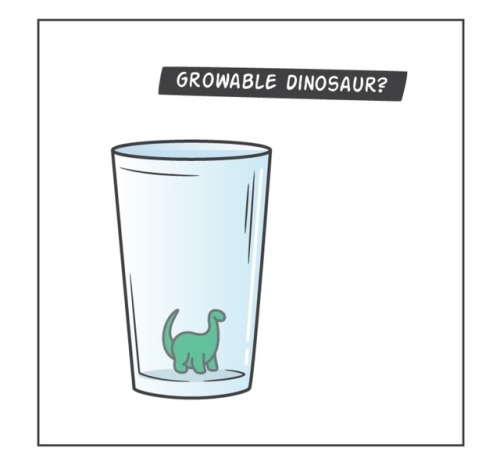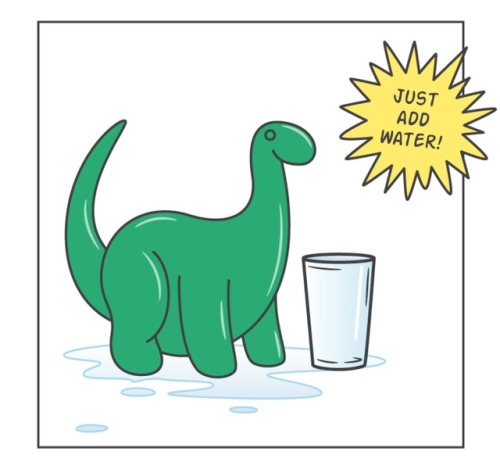Disk-cuss. Http://ift.tt/1iBNaVf

Disk-cuss. http://ift.tt/1iBNaVf
More Posts from Duxgregis and Others
I hope they taste better than Matt Damon's potatoes

Tending Your Garden … In Space via NASA http://ift.tt/2zpxa6R
“Nothing is more fairly distributed than common sense: no one thinks he needs more of it than he already has.”
— Rene Descartes, Discourse on the Method

#StarTrekPuns


Yeah. We get it. We've all seen Saving Private Ryan, and played Wolfenstein at some point in our lives.
Any guy: I love history, I find it really interesting. Especially-
Me cutting him off, rubbing my temples: especially World War II. Yeah








Just Add Water
This is the NASA I love to see
May the 4th Be With You
Happy May the 4th!
How many connections does America’s space program have with the fictional world of Star Wars? More than you might think…
Join us as we highlight a few of the real-world TIE-ins between us and Star Wars:
Space Laser


Lasers in space sounds like something straight out of Star Wars, but it’s also a reality for us. Our own GEDI (yes, like Jedi) instrument will launch later this year to the International Space Station.


GEDI stands for the Global Ecosystem Dynamics Investigation lidar. It will study the height of trees and forests, using three lasers split into eight tracks, and create a 3D map of forests around the planet.

With GEDI’s new tree maps, we’ll get a better understanding of how much carbon is stored in forests all over Earth, and how forests will be able to absorb increasing carbon dioxide in the atmosphere.
The Jedi knights may help protect a galaxy far, far away, but our GEDI will help us study and understand forest changes right here on Earth.

Another JEDI

There’s another Jedi in town and it happens to be orbiting the planet Jupiter. Our Juno spacecraft, which arrived at the gas giant in July 2016, has an instrument on board that goes by the name of JEDI - the Jupiter Energetic Particle Detector Instrument.
While it doesn’t use a light saber or channel “the force”, it does measure high-energy particles near Jupiter. Data collected with the JEDI instrument will help us understand how the energy of Jupiter’s rotation is being funneled into its atmosphere and magnetosphere.
Death Star Moon

We know what you’re thinking…”That’s no moon.” But actually, it is! This is a real picture taken by our Cassini spacecraft of Saturn’s moon Mimas. In this view taken on Cassini’s closest-ever flyby of Mimas, the large Herschel Crater dominates, making the moon look like the Death Star. Herschel Crater is 130 kilometers, or 80 miles, wide and covers most of the right of this image.
We Actually Do Have the Droids You’re Looking For

We have robots roving and exploring all over the solar system, but it’s our own “R2” that’s most likely to resonate with Star Wars fans. Robonaut 2, launched in 2011, is working along side humans on board the International Space Station, and may eventually help with spacewalks too dangerous for humans. Incidentally, an earlier version of Robonaut bore a strong “facial” resemblance to enigmatic bounty hunter Boba Fett.

Another “droid” seen on the space station was directly inspired by the saga. In 1999, then Massachusetts Institute of Technology (MIT) professor David Miller, showed the original 1977 Star Wars to his students on their first day of class. After the scene where hero Luke Skywalker learns lightsaber skills by sparring with a floating droid “remotes” on the Millennium Falcon, Miller stood up and pointed: “I want you to build me some of those.”
The result was “SPHERES,” or Synchronized Position Hold, Engage, Reorient, Experimental Satellites. Originally designed to test spacecraft rendezvous and docking maneuvers, the bowling-ball size mini-satellites can now be powered by smart phones.
A few more TIE ins…

When space shuttle Atlantis left the International Space Station after 2007’s STS-117 mission, it caught a view of the station that looked to some like a TIE fighter.

The “TIE-ins” go beyond casual resemblance to real engineering. We already use actual ion engines (“TIE” stands for “Twin Ion Engines”) on spacecraft like Dawn, currently orbiting the dwarf planet Ceres. In fact, Dawn goes one better with three ion engines.
Want more Star Wars connections? Check out THIS Tumblr to learn about the REAL planets we’ve found outside our solar system that resemble planets from the movie.
Take THIS quiz to see if you know more about the Milky Way galaxy or a galaxy far, far away.
Make sure to follow us on Tumblr for your regular dose of space: http://nasa.tumblr.com.

Some basic science 🤓
Astronomy and Astrophysics: Facts
Here is a list of some curiosities of astronomy and astrophysics. From our solar system to interstellar space.

Mercury is shrinking: It’s small, it’s hot and it’s shrinking. A NASA-funded research suggests that Mercury is still contracting today, joining Earth as a tectonically active planet.

Stellar neighbor: Proxima Centauri is a red dwarf, a small low-mass star, about 4.25 light-years (1.30 pc) from the Sun in the constellation of Centaurus. Proxima Centauri is the nearest star of the Sun that is known and at first can only be seen from the Southern Hemisphere.

A heavy star: 5 milliliters, or one teaspoon of neutron star material, equals the weight of about 900 Great Pyramids of Giza. One sugar cube equates to 100 billion tons. A cubic meter? The entire weight of the Atlantic Ocean. With an escape velocity of 100,000 km/s (Earth’s is a puny 11.3 km/s), a fall from 1 meter above a neutron star would only take one microsecond, and you would impact at around 2000 km/s, or 7.2 million kilometers per hour. This force would destroy all your component atoms, rendering all your matter identical. Fortunately, the closest neutron star is rather far away (about 400 light-years), so I wouldn’t be too concerned about the aforementioned event.

Asteroid belt: The asteroid belt is the circumstellar disc in the Solar System located roughly between the orbits of the planets Mars and Jupiter. It is occupied by numerous irregularly shaped bodies called asteroids or minor planets. About half the mass of the belt is contained in the four largest asteroids: Ceres, Vesta, Pallas, and Hygiea. The total mass of the asteroid belt is approximately 4% that of the Moon, or 22% that of Pluto, and roughly twice that of Pluto’s moon Charon (whose diameter is 1200 km).

Sunlight Takes Around 8 Minutes To Reach Earth: The Earth is located 93 million miles (150 million kms) away from the Sun, a distance known to astronomers as an astronomical units or AU. Traveling at the speed of light (186,282 miles per second), sunlight is able to cross this vast distance in around 8 minutes 20 seconds.

Pluto is about 2,376 km in diameter. Pluto’s small size and low mass mean that it has a density of 1.86 grams per cubic centimeter according to recent measurements by New Horizons, about 40 percent of Earth’s density.

Just like black holes; neutron stars also generate gravitational waves: This year astronomers were able to detect gravitational waves originating from neutron stars. And in addition, it was possible to observe the location of the collision thanks to the efforts of the astronomers. This is a great advance for astronomy.

Most neutron stars are very fast rotators: Since the conservation of angular momentum following a supernova explosion transfers the progenitor star’s rate of rotation to the remnant that is only about 20 km (12.5 miles) in diameter, the result is that the neutron star rotates very rapidly when it is formed. Most known neutron stars rotate several hundred times per second, but the fastest rotator yet discovered, the neutron star designated PSR J1748-2446ad, is known to rotate 716 times per second, which translates into 43,000 rotations per minute, or 24% of the speed of light at the star’s equatorial surface.

Asteroid also has satellite: This color picture is made from images taken by the imaging system on the Galileo spacecraft about 14 minutes before its closest approach to asteroid 243 Ida on August 28, 1993. Ida’s moon, Dactyl, was discovered by mission member Ann Harch in images returned from Galileo. It was named after the Dactyls, creatures which inhabited Mount Ida in Greek mythology. Ida has an average diameter of 31.4 km (19.5 mi). It is irregularly shaped and elongated, and apparently composed of two large objects connected together. Its surface is one of the most heavily cratered in the Solar System, featuring a wide variety of crater sizes and ages.

Kepler-444 system: The oldest known planetary system has five terrestrial-sized planets, all in orbital resonance. This weird group showed that solar systems have formed and lived in our galaxy for nearly its entire existence. Estimated to be 11.2 billion years old (more than 80% of the age of the universe), approximately 117 light-years (36 pc) away from Earth in the constellation Lyra.
Sources: wikipedia, space.com, futurism.com and astronomytrek.com
Image credit: NASA/JPL, ESO/M. Kornmesser, NASA/XMM Newton, Casey Reed/Penn State University, NASA/ESA/Hubble
To learn more about the shrinkage of Mercury, click here.
To learn more about the gravitational waves generated by neutron stars click here.
-
 meowpetals liked this · 10 years ago
meowpetals liked this · 10 years ago -
 isatheengie reblogged this · 10 years ago
isatheengie reblogged this · 10 years ago -
 raivaryn reblogged this · 10 years ago
raivaryn reblogged this · 10 years ago -
 theebrokenpath liked this · 10 years ago
theebrokenpath liked this · 10 years ago -
 granthastime liked this · 10 years ago
granthastime liked this · 10 years ago -
 erraticrainbows liked this · 10 years ago
erraticrainbows liked this · 10 years ago -
 nehme-mit-blog liked this · 10 years ago
nehme-mit-blog liked this · 10 years ago -
 sylraven reblogged this · 10 years ago
sylraven reblogged this · 10 years ago -
 fairandradiantmaiden reblogged this · 10 years ago
fairandradiantmaiden reblogged this · 10 years ago -
 gtrakun liked this · 10 years ago
gtrakun liked this · 10 years ago -
 gtrakun reblogged this · 10 years ago
gtrakun reblogged this · 10 years ago -
 nothingbutjocularity liked this · 10 years ago
nothingbutjocularity liked this · 10 years ago -
 class55rock-blog reblogged this · 10 years ago
class55rock-blog reblogged this · 10 years ago -
 iwannadofunthings liked this · 10 years ago
iwannadofunthings liked this · 10 years ago -
 a-boat-beneath-the-sunny-sky reblogged this · 10 years ago
a-boat-beneath-the-sunny-sky reblogged this · 10 years ago -
 a-boat-beneath-the-sunny-sky liked this · 10 years ago
a-boat-beneath-the-sunny-sky liked this · 10 years ago -
 ghost-flakes liked this · 10 years ago
ghost-flakes liked this · 10 years ago -
 leiudsahtlist reblogged this · 10 years ago
leiudsahtlist reblogged this · 10 years ago -
 kazbie liked this · 10 years ago
kazbie liked this · 10 years ago -
 jderosa96 reblogged this · 10 years ago
jderosa96 reblogged this · 10 years ago -
 dilettantehanashi liked this · 10 years ago
dilettantehanashi liked this · 10 years ago -
 charcoal-eyes-and-monroe-hips liked this · 10 years ago
charcoal-eyes-and-monroe-hips liked this · 10 years ago -
 charcoal-eyes-and-monroe-hips reblogged this · 10 years ago
charcoal-eyes-and-monroe-hips reblogged this · 10 years ago -
 kitsu-vikra reblogged this · 10 years ago
kitsu-vikra reblogged this · 10 years ago -
 kitsu-vikra liked this · 10 years ago
kitsu-vikra liked this · 10 years ago -
 themathnerd liked this · 10 years ago
themathnerd liked this · 10 years ago -
 champagne-svpern0va liked this · 10 years ago
champagne-svpern0va liked this · 10 years ago -
 procyonvulpecula reblogged this · 10 years ago
procyonvulpecula reblogged this · 10 years ago -
 altymon-archive reblogged this · 10 years ago
altymon-archive reblogged this · 10 years ago -
 razgriz438 reblogged this · 10 years ago
razgriz438 reblogged this · 10 years ago -
 torrentab liked this · 10 years ago
torrentab liked this · 10 years ago -
 alliewade reblogged this · 10 years ago
alliewade reblogged this · 10 years ago -
 alliewade liked this · 10 years ago
alliewade liked this · 10 years ago -
 wheaman reblogged this · 10 years ago
wheaman reblogged this · 10 years ago -
 liftgrenades reblogged this · 10 years ago
liftgrenades reblogged this · 10 years ago -
 jeieru liked this · 10 years ago
jeieru liked this · 10 years ago -
 mrs-mojo-risin-blues reblogged this · 10 years ago
mrs-mojo-risin-blues reblogged this · 10 years ago -
 mrs-mojo-risin-blues liked this · 10 years ago
mrs-mojo-risin-blues liked this · 10 years ago -
 pockydreamer reblogged this · 10 years ago
pockydreamer reblogged this · 10 years ago -
 pockydreamer liked this · 10 years ago
pockydreamer liked this · 10 years ago